Few of us know the function of such an organ in the human body as the spleen. But he is responsible for the immune system, counteracting pathogenic bacteria and viruses. Therefore, it makes sense to tell in detail about this body, where the spleen is located and how it hurts.
Material Content:
The location of the spleen in the human body
The main work of this body is to recognize the agent that can cause harm and the development of bodies that can deal with it as efficiently as possible.
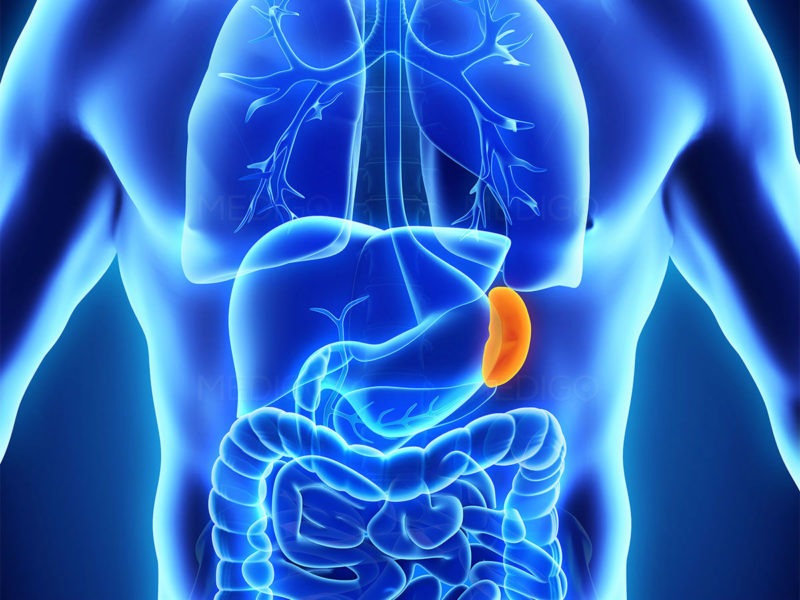
The accumulation of iron also occurs in it, which is important to maintain an adequate level of hemoglobin. The spleen also performs other functions, for example, to some extent takes part in the purification of blood in pregnant women.
Where is the spleen in the human body? Its location is the left hypochondrium on the same level as the stomach. In some cases, depending on the individual characteristics of physiology, the organ may be slightly higher or lower than the standard. So, for tall people it is at the level of 8 ribs, and for small ones - 11.
Nature reasonably placed the spleen in the abdominal cavity so as to protect against injury - under the ribs. In appearance, it looks like a small bubble with a large number of channels inside, which includes blood flow moving from the aorta.
How the spleen hurts, the nature of the pain
To understand that the pain that has arisen is related to the spleen, you need to know how this organ hurts.There are no pain receptors in it, but due to the close proximity of the stomach, kidneys and pancreas with the development of inflammation, unpleasant sensations appear in them.

It can be sick in the area of the organ in different ways, depending on the problem encountered:
- thread on the left side, giving under the shoulder blade, indicates an injury. In this case, pallor of the skin, cold sweat, lowering of blood pressure, nausea, vomiting and constant thirst may appear;
- aching, pulling pain, extending to the lower back and intensifying on inspiration, can speak of a heart attack;
- bright pain in the left hypochondrium, passing into the chest and giving to the shoulder, indicate an abscess. Accompanying pain is an increase in body temperature and a feeling of chilliness. And when examined by a doctor, an increase in organ in size is observed;
- unbearable pain accompanied by a strong enlargement of the spleen, felt even on the right, which may indicate tuberculosis;
- dull continuous pain, as a rule, characterize the development of neoplasms in the organ. Along with this symptom, an allergy appears, the person becomes lethargic, does not want to eat and the body temperature is constantly kept at a slightly elevated level (subfebrile).
It is interesting: hemoglobin boosting products
If unpleasant sensations in the liver area are added to pain in the spleen, then most likely cirrhosis begins to develop in the organ.
Symptoms and causes of pain
The main sign of impaired spleen activity is an increase in size, which is due to its anatomical structure, under certain conditions, leading to this effect.
Symptoms of pain in the spleen, in addition to the above, may be the following - pinching, squeezing and bulging.

Also, problems in the organ are accompanied by:
- The accumulation of blood, which can not be determined visually - only with the help of special diagnostic manipulations.
- Sealing with pressure (palpation).
- Vomiting and dry mouth.
- The appearance of cold sweat and impaired cardiac activity in the form of arrhythmia, angina pectoris or tachycardia.
- Increased heart rate and dizziness.
- The appearance of a feeling of bursting at the location of the spleen.
- Fever and bruising or bluishness in the area of the organ.
If you are injured, then breathing pain, shortness of breath and trembling throughout the body may additionally appear.
Important: the presence of even 2 of the above symptoms gives rise to immediate medical attention.
Why does the spleen hurt - consider the main causes of this unpleasant phenomenon. The negative effect on the spleen of the presence in the body of helminths that violate the integrity of its shell has been scientifically proven.
Closed and open injuries
Closed injuries are the result of an impact with a blunt object, a fall or strong squeezing of the abdomen.
Open injuries are hits with punctured or cut objects, as well as penetration of a bullet.
All this can lead to rupture of the spleen or the formation of a crack.
Infectious ailments
These include hepatitis in acute or chronic form, infectious lesions of the respiratory system and blood.
Spleen infarction
Factors for the appearance of this disease are thrombosis, atherosclerosis, leukemia, or diffuse ailments of connective tissue.
Symptoms and course of a heart attack directly depend on how much the organ is affected. For example, you may not suspect the development of this serious ailment for a long time until it becomes extensive.
Abscess
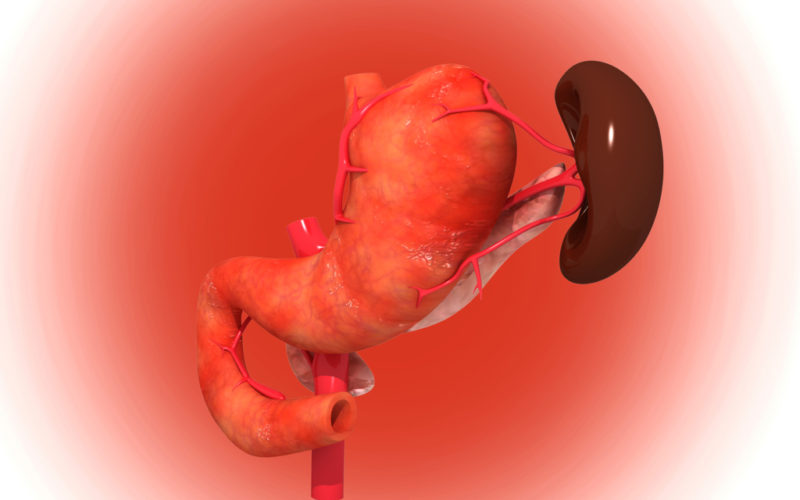
It is able to develop with organ damage by bacteria, heart attack, hematoma (subcapsular) and endocardia.
Tuberculosis
Such a disease occurs when the spleen is damaged by Koch's bacillus, which enters there from the lungs, which is possible with advanced treatment for tuberculosis.
Oncology
In the spleen, hemangioma, lymphangioma or fibroma can be diagnosed, which at first cause a slight increase in body temperature, general weakness, pain and exhaustion.
Even in the spleen, cysts can form - parasitic and non-parasitic, as well as echinococci.
Any of these diseases is diagnosed by a doctor, prescribing subsequent treatment. And the sooner you turn to him for help, the faster and without undesirable consequences heal your body.
Diagnostics
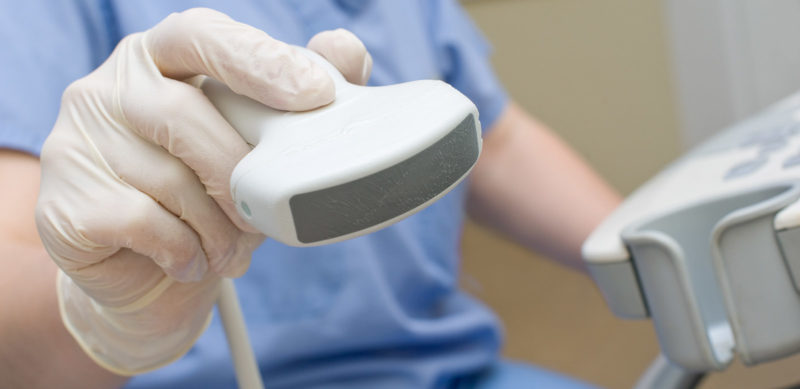
For the diagnosis in medicine, there are several diagnostic methods that can accurately determine the disease:
- a patient survey, during which it becomes clear what the person was sick with, whether there are any chronic ailments, and much more;
- visual inspection, although it is not very effective, since an enlargement of the spleen in this way can be seen only with a significant change in size;
- palpation is the main diagnostic method, which is carried out in the supine position (right) or back with legs crossed. The emphasis is on organ volumes, consistency, mobility and character, as well as on sensitivity (pain);
- an x-ray is performed better with significant gas formation in the colon and stomach, for which, when examined, these organs are inflated artificially;
- a puncture is taken if the spleen is greatly enlarged. In this case, the observance of certain conditions is very important so as not to damage the capsule and cause bleeding. To do this, the patient must take a deep breath and hold his breath before the puncture. Due to the low safety of such a method, it is prescribed only when absolutely necessary;
- Ultrasound helps to determine the condition of the organ, determining its structures (local and diffuse) and whether there are neoplasms;
- blood sampling for its complete study, which is prescribed with a significant increase in organ size.
Functional diagnostic methods include injection of adrenaline under the skin (Frey's test). At the same time, a healthy spleen should contract and decrease in size 2 times or more. This is necessary in order to distinguish a simple increase from tumor lesions.
About the treatment of diseases of the spleen
In medicine, there is no single treatment regimen for the spleen, it all depends on the diagnosis. And it is strictly forbidden to do this on your own, which can lead to serious complications and ailments of the organs of the gastrointestinal tract.
Treatment of the body includes a mandatory diet. Medicines are also used, as an addition - alternative methods, and in some cases surgical intervention.
Dietary recommendations
You will have to completely eliminate fatty and fried foods, spices, smoked foods and sweets, as well as alcohol, and get rid of the bad habit of smoking cigarettes.
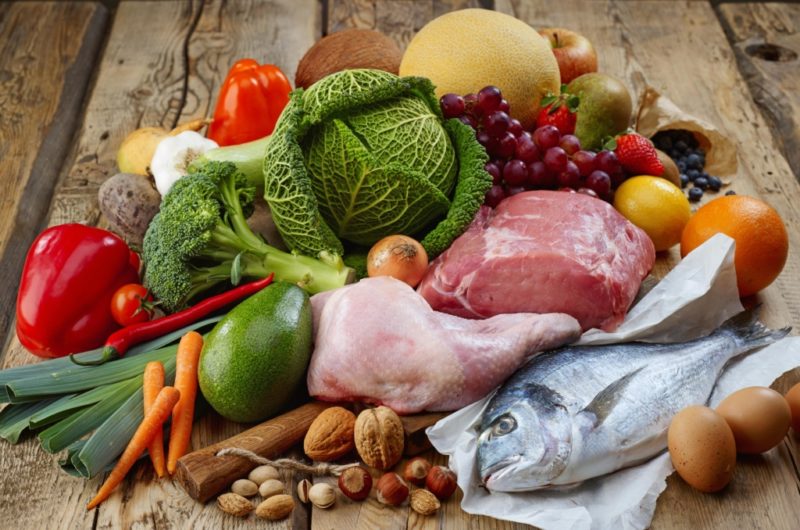
Here are the products that you can use for problems with the spleen:
- Low-fat meats and fish.
- Beef liver and cod.
- Nuts and cottage cheese.
- Apples, pomegranates, cabbage (white), beets and other fresh fruits and vegetables.
If you really want something sweet, you can afford dark chocolate (up to 30 g) and marmalade. From drinks, give preference to teas (weak) and dried fruit compotes.
Pain medications
Any drugs to eliminate pain and / or inflammation are prescribed by a doctor and are taken strictly according to the prescribed schedule.
It can be antibacterial and drugs, and for severe pain, painkillers are used.
Folk methods
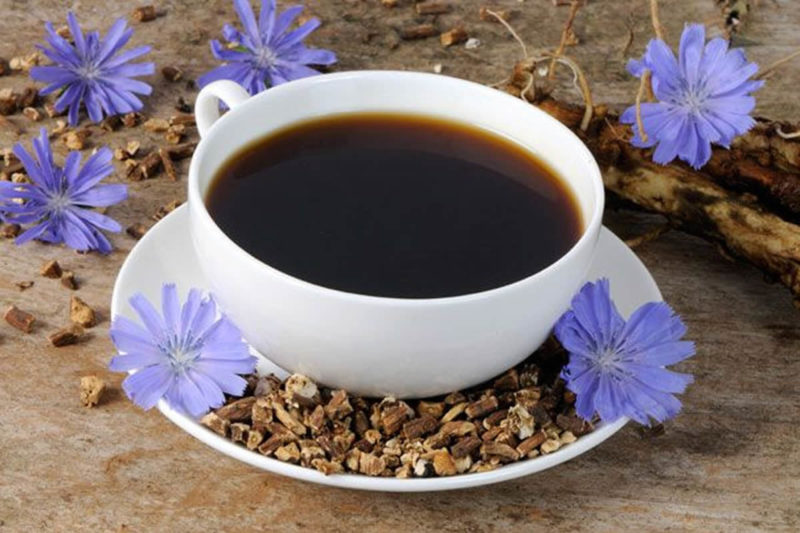
Effectively heal spleen diseases:
- decoction of chicory roots. Pour 20 g of powder with a glass of boiling water, leave for 40 minutes, strain and drink warm for 2 tbsp. in the morning, at lunch and in the evening half an hour before a meal;
- chicory extract (drink according to instructions);
- decoction of hop cones. 1 tbsp poured with boiling water, infused for 30 minutes and drunk like a decoction of chicory roots.
Surgical intervention
Removal of the spleen (splenectomy) is indicated for the following diseases, both in adults and in children:
- malignant neoplasms of the digestive tract with metastases;
- if it is impossible to suture after injuring a capsule or leg of an organ (vascular);
- if hypersplenic syndrome is diagnosed;
- with the ineffectiveness of the therapy with respect to hemolytic anemia.
Another disease of the spleen gives reason to remove it - this is neoplasia (primary or secondary).
Prevention
The basis of preventive measures against the development of spleen diseases is the purification of the blood system. There are both pharmaceutical preparations for this, and alternative recipes.
Important: any medication, in addition to useful properties, also has side effects, which should always be considered.
Here are a few preventative prescription recipes that are not used to treat an existing disease:
- 1 cup of hop fruit (cones) is crushed, half a liter of vodka is poured and set aside in a dark place for 10 days, after which you can drink the composition 25 g 3 times a day.
- Combine, grind and brew a liter of boiling water yarrow, calendula and wormwood in a water bath for 15 minutes. After this, cool, strain and drink 100 g.
- Mix freshly squeezed carrot juices with beets and take 0.5 cups 3 times a day.

It has a positive effect on the spleen and pomegranate juice, which should be drunk before meals for 30 minutes. Cranberries, aronia and viburnum have a beneficial effect on the organ and the entire circulatory system.
Despite the fact that when a spleen is removed, a person continues to live fully, it is still necessary for the body. Therefore, if even seemingly insignificant symptoms appear, consult a specialist who will promptly and competently identify the problem and prescribe treatment if necessary.












